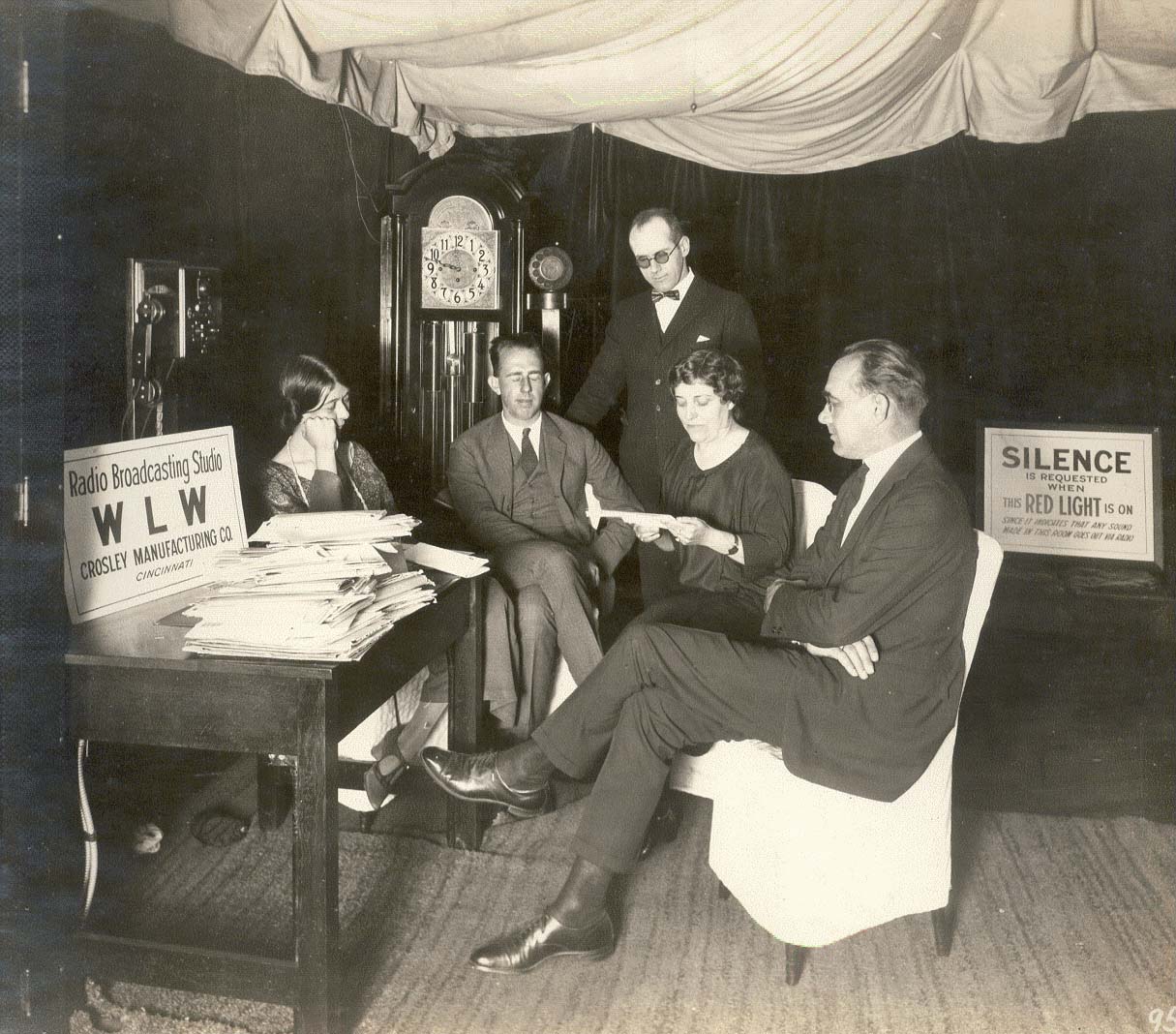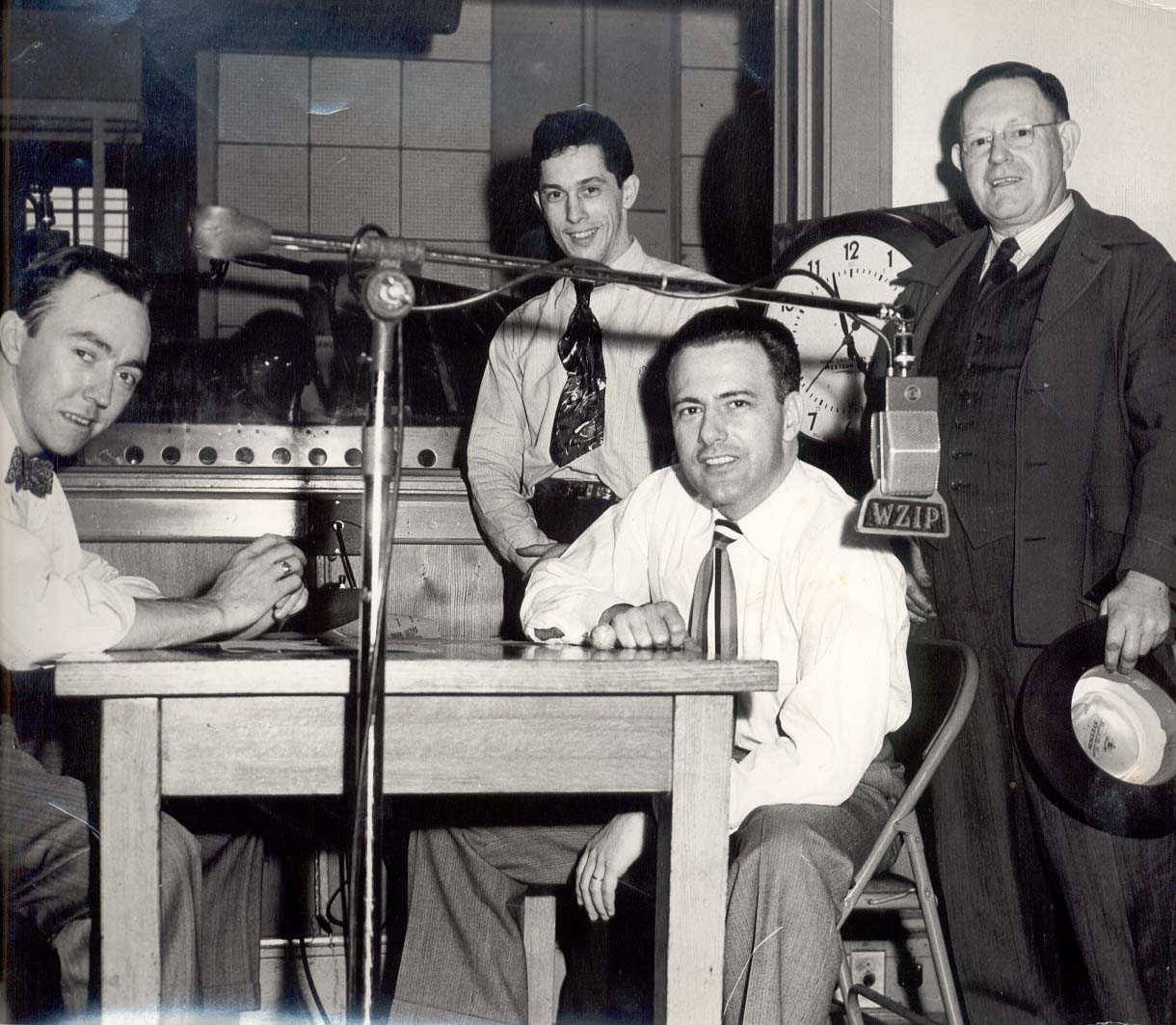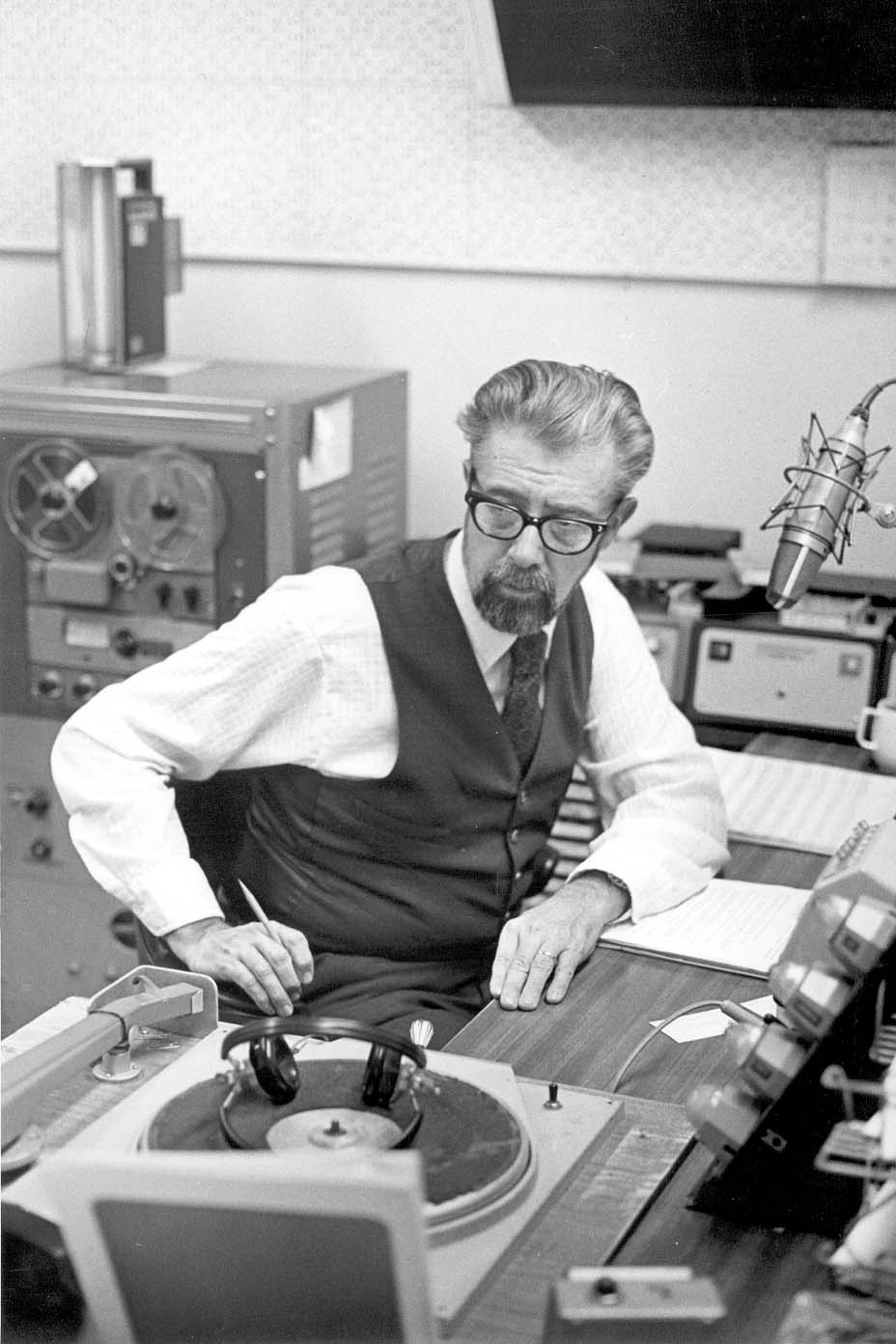|
|
|
|
- 1921, December, WMH (Cincinnati's first commercial radio station) goes on the
air in Walnut Hills.
- 1922, March, Powel Crosley Jr. puts WLW on the air to augment the sale of his Crosley radios.
- 1923,
June, WSAI goes on the air at the U.S. Playing Card Company in Norwood.
- 1924, December, WFBE goes on the air at the
Parkview Hotel downtown.
- 1925, April, WMH becomes WKRC to reflect the name of its new owners-the Kodel Radio Corporation.
- 1926,
by this point, Crosley has been the world's largest manufacturer of radios for over a year.
- 1928, Crosley buys WSAI
from US Playing Card. WLW is one of first stations granted 50-KW. New factory is started in Camp Washington which will include
studios.
- 1929, September, L.B. Wilson and a group of investors put WCKY on the air in Covington.
|
|

1920's
WLW Studio, Colerain and Alfred Streets. Note the monks cloth wall coverings.
|
|

WZIP
studios in former WCKY building in Covington, KY circa 1948.
|
|
- 1930, WKRC is acquired by CBS making it one of the network's O and O's.
- 1931,
Mills Brothers, Peter Grant, Eddie Albert among acts coming to WLW
- 1932, "Ma Perkins" leaves Cincinnati for Chicago,
Fats Waller arrives.
- 1933, Crosley builds new factory in Camp Washington, WLW locates its studios to the eighth floor.
- 1934,
May, WLW granted permission to broadcast experimentally at 500,000 watts, making it the most powerful station in the world!
NBC carries the dedication program nationally.
- 1935, October, WFBE is purchased by EW Scripps, who change call letters
to WCPO for its newspaper, the Cincinati POst.
- 1937, WCKY is granted a power increase to 10-KW. John Lair brngs his
Renfro Valley entertainers to WLW.
- 1938, WCPO brings Mort Watters to Cincinnati.
- 1939, WCKY is granted 50-KW,
WLW's superpower is revoked and the station returns to 50-KW.
|
|
|
- 1940, the four
Williams brothers come to WLW.
- 1941, America enters WWII, radio reacts.
- 1942, Doris Day joins WLW as a staff
vocalist.
- 1943, WLW wins first Peabody Award. FM radio debutes with WLWA.
- 1945, Powel Crosley sells everything
except Reds to try one more time to create a successful Crosley car.
- 1946, WSAI sold to Marshall Field. WCTR, transit
radio, debutes on WKRC's FM frequency.
- 1947, WZIP begis broadcasting in old WCKY studios in Covington.
- 1948,
February, WLW-T television begins comercial broadcasting on Ch. 4. WNOP begins in Newport.
- 1949, WCPO and WKRC television
also begin broadcasting.
|
|

Peter
Grant in the WLWT weather studio in the Comex building ca. 1955.
|
|

Don
Herman in the WCKY studios ca. 1961.
|
- 1951,
WLW-T's Midwestern Hayride is broadcasting as a national summer replacement.
- 1951, Stan Matlock begins his ascent
as WKRC ratings king
- 1952, Wally Phillips leaves WLW.
- 1952, Nelson King becomes one of the most profitable
and popular DJ's in the country on WCKY
- 1953, WCIN debutes on the radio dial with Buggs Scruggs.
- 1954, L.B.
Wilson dies of a heart attack.
- 1955, WLW's Ruth Lyons is getting national attention for her 50-50 Club show.
- 1956,
WLWT debuts one of first broadcast weather radars
- 1958, Bob Braun appears as disc jocky and program host.
- 1959,
Paul Dixon wins TV/Radio Guide's personality of the year for a second time.
|
|
- 1961, WSAI changes to Top-40 format, brings in the "Good Guys."
- 1963,
Shad and Mike bring off-beat humor to WCPO.
- 1964, WSAI brings the Beatles to town for the first time.
- 1965,
WCPO is sold, becomes WUBE owned by a group including Danny Kaye and Lester Smith.
- 1966, Beatles come to town a second
time, this time Crosley Field show is postponed because of rain.
- 1967, WEBN-FM debutes as classical station.
- Early
70's, WKRQ FM becomes Q-102 and starts rivalry with WEBN.
- Deregulation in 1981, leads to creation of Jacor, which
buys WEBN and WLW, reinventing venerable old AM into a talk format station.
- 1990's Clear Channel ends up owning eight
Cincinnati stations, locates national radio corporate offices to Covington.
- 2005, Xavier sells WVXU to WGUC. Golden
age of Cincinnati radio comes to an end (okay, that's a personal statement)
|

WLW's
Rich King in studio ca. 1967.
|
|
|
|
|
 |
